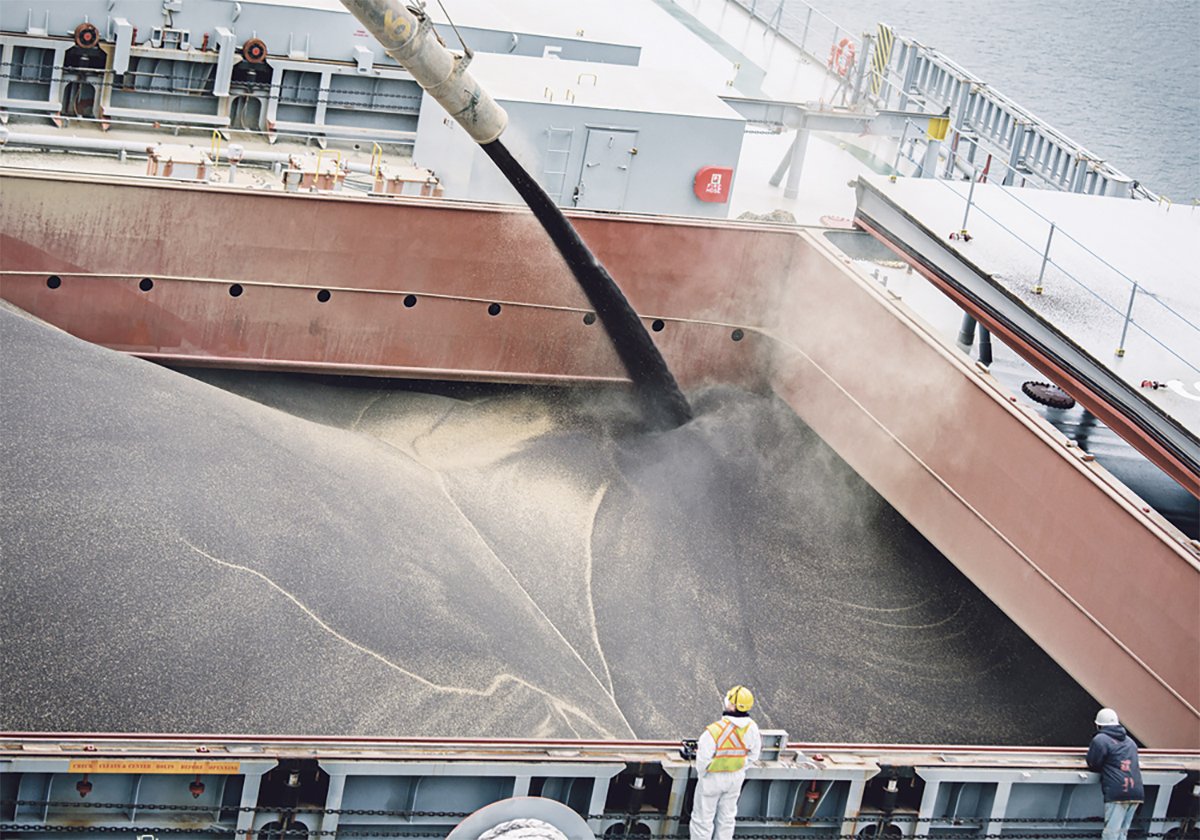Pulse crop development | Analysts believe that excess rainfall is likely to push down yields
Analysts are starting to suspect there may be lurking problems with India’s kharif or summer pulse crop.
India’s meteorological department reports that monsoon rains were 14 percent above normal for the June 1 to Aug. 19 period. States in the western half of the country are reporting excess rainfall.
Lots of rain is generally perceived to be a good thing for crop development but this may be a case of too much of a good thing.
There is little specific information about India’s pulse crop development but according to the U.S. Department of Agriculture large portions of the country’s soybean crop have been drowned out in key states.
Read Also

Exports off to a slow start after last year’s torrid pace
Canadian grain, oilseed and pulse exports are off to a slow start, but there are some bright spots, according to the Canadian Grain Commission’s most recent weekly export data report.
“The major soybean growing areas of Madhya Pradesh, Maharashtra and southeast Rajasthan received significantly above normal precipitation in June and July,” said the USDA in its August World Agricultural Production report.
Continued excess rainfall in those states is raising “major concerns” about soybean yield prospects.
“There is general agreement among observers and experts that excess rainfall is likely to result in significantly lower-than-expected yields,” said the USDA report.
It said nothing about pulse crop yields but the three states mentioned in the report usually produce about half of India’s pulses.
Soybeans are similar to pulses in that they are both legumes, which has analysts like Marlene Boersch of Mercantile Consulting Venture wondering about the state of the country’s pulse crops.
She has asked her contacts in India if anything is wrong and has received reassuring comments that everything is OK but Boersch suspects they may not be telling the truth.
“I think there’s something not right,” she said.
Desi chickpea exporters in Australia have been aggressively dropping their prices in an effort to stimulate Indian demand that has stagnated due to the rapidly falling rupee.
“I think that’s why (Indian importers) are being very, very quiet about any (crop) problems,” said Boersch.
Chuck Penner, analyst with LeftField Commodity Research, agreed that India could be concealing a problem but he suspects the flooding hasn’t done too much damage to agricultural land.
“I’m not prepared to right them off yet or call for significantly lower yields,” he said.
Penner acknowledged that soybeans are more flood-resilient than pulses and that there are a lot of pulses grown in the states where the USDA is reporting problems with soybean yields.
However, he hasn’t seen any definitive signs of trouble in terms of rising pulse prices or panicky importers. What he has seen is plenty of reports of ample moisture to grow kharif crops throughout the country.
“Where they’re not flooded they’ll be doing very well in terms of yield. Will that offset flooding losses in those worst hit states? Quite likely,” he said.
Indian farmers had seeded 23 million acres of pulses as of Aug. 16. That’s up nearly two million acres from last year but slightly below the long-term average, according to Stat Publishing.
If it turns out there is a serious problem with India’s kharif pulse crop, it could be just the tonic needed for slumping Canadian red lentil and yellow pea prices, said Boersch.
The plummeting rupee has prompted some Indian importers to walk away from shipments of Canadian red lentils, leaving them stranded at port while exporters desperately search for a new home for the product.
That has put a damper on lentil markets that would be lifted in a hurry if the kharif crop was in serious trouble.
“We would see the market revive,” said Boersch.
It would also do wonders for yellow peas, which is Canada’s top pulse export to India. Boersch said it would cause Australian desi chickpea exporters to reconsider their price-cutting strategy, which in turn would bolster yellow pea prices just as harvest kicks into gear.
She intends to probe a little deeper with her contacts in India to see if there is indeed some crop damage that is being concealed.


















